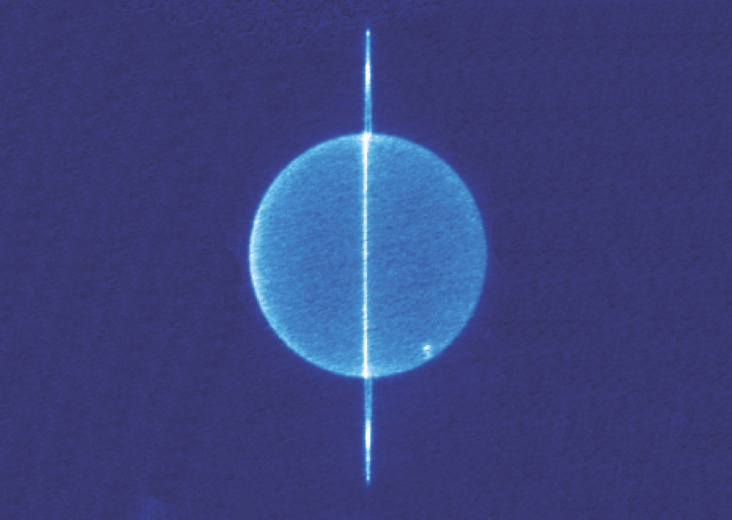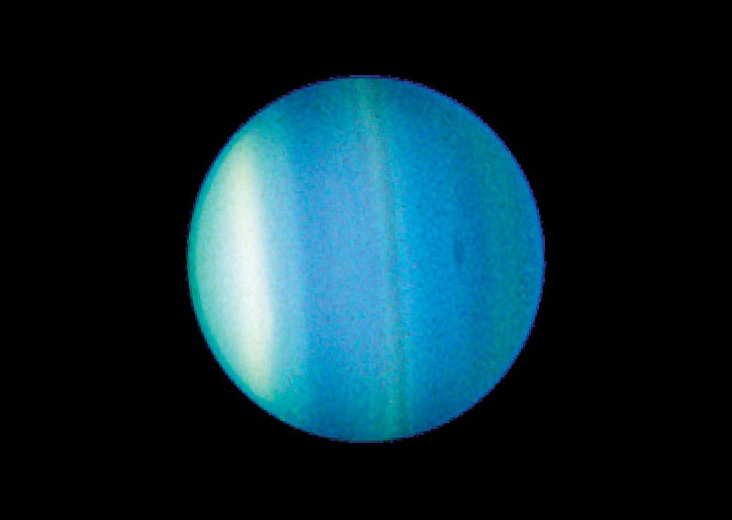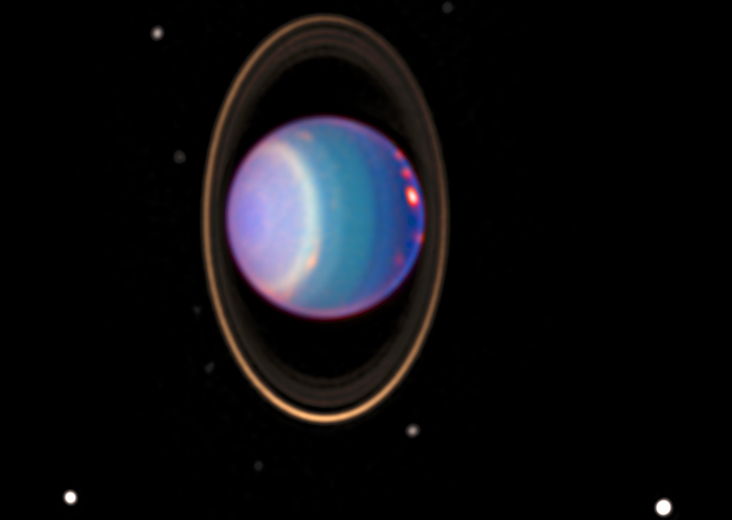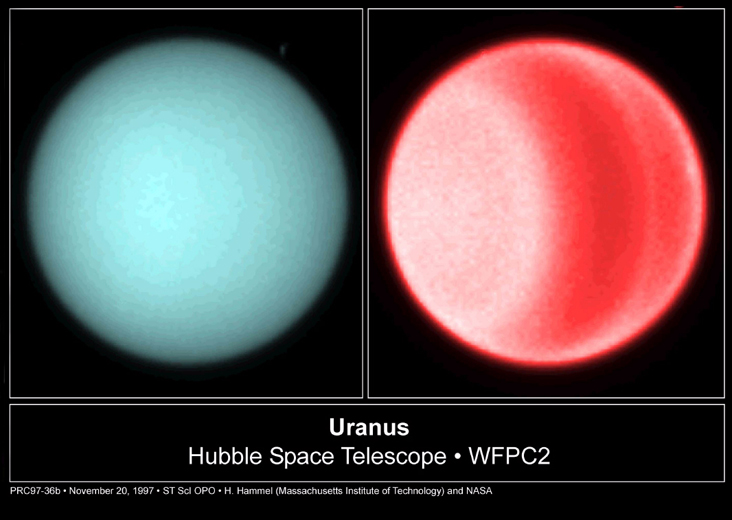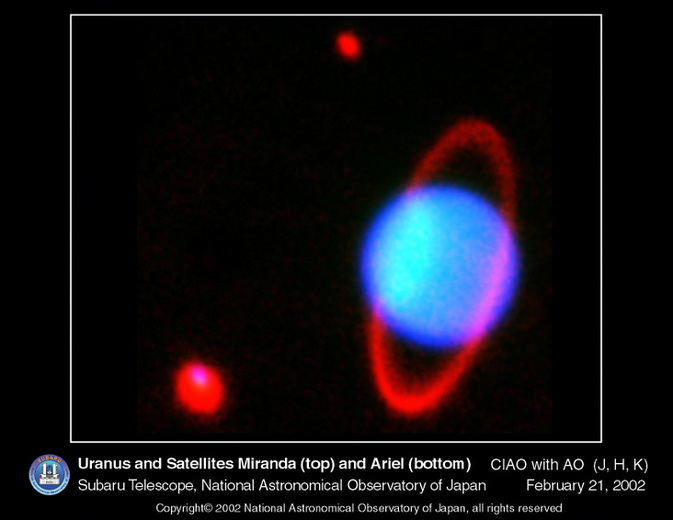Uranus was discovered by William Herschel in 1781 and was the first planet to be discovered by a telescope.
This planet is rather unusual because it appears to be on its side: the axis tilt from vertical by 98°! The reason for this is not known, many think that it was hit by another object during formation.
Uranus is covered in clouds but has hardly any features. It appears blue-green because methane gas in the atmosphere filters out the other colours. But the main composition is Hydrogen (82.5%) and Helium (15.2%). Methane and other trace gases make up the other 2.3%.
Uranus has a magnetic field that is 50 times stronger than Earth. Uranus is already tilted unusually, but the magnetic pole is tilted another 60° from the axis of rotation. That would be like the Earth's magnetic North pole being in Monaco! Even more unusual, the magnetic field is generated in the mantle rather than the core!
Uranus has 11 known rings around the equator. Since Uranus is on its side, these rings appear to be almost upright. These rings are dark and therefore difficult to see from Earth.
Uranus is visible from about May to January. It can not be seen with the naked eye. You can just about see it through binoculars but a telescope would be better. You should be able to see its blue-green hue.

